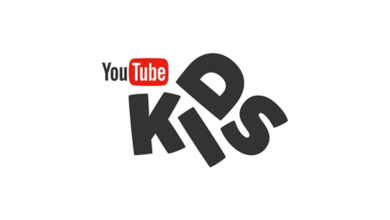How to Create Engaging Social Media Content

Creating engaging social media content is essential for connecting with your audience and building a strong online presence. In today’s digital age, competition for attention is fierce, making it crucial to employ effective strategies that resonate with your followers. In this guide, we will explore various techniques and tips to help you craft captivating and shareable social media content that not only grabs your audience’s attention but also keeps them coming back for more. Whether you’re a business looking to boost brand awareness or an individual aiming to grow your personal online presence, mastering the art of engaging social media content can make a significant impact on your success in the digital world.
Create Engaging Social Media Content
To get started on this journey to creating compelling content, we’ll delve into proven methods, innovative ideas, and best practices for different social media platforms. From crafting attention-grabbing headlines to incorporating visually appealing elements and leveraging trending hashtags, we’ll cover a wide range of strategies to help you stand out in the crowded social media landscape. Whether you’re a seasoned content creator or just getting started, this guide will provide you with the insights and techniques you need to create social media content that not only resonates with your audience but also drives meaningful engagement and growth for your online presence.
Understanding Your Audience
Identifying Your Target Demographic
Engaging Social Media Content: Before embarking on your social media content creation journey, it’s imperative to gain a deep understanding of your target demographic. Your audience is at the core of your content strategy, and knowing them well is key to creating content that resonates.
Read More: How to Use Social Media for Brand Awareness 2023
Age, Gender, and Location
Start by identifying the basic demographics of your audience. What age group do they belong to? Are they predominantly male, female, or a mix? Knowing the geographical locations of your audience can also be beneficial, especially if your content needs to cater to specific regions.
Interests and Hobbies
Dig deeper by exploring the interests and hobbies of your audience. What are their passions? What activities do they enjoy in their free time? Understanding their interests will help you create content that aligns with their preferences.
Pain Points and Challenges
Identifying the pain points and challenges your audience faces is crucial. What problems can your content help them solve? By addressing these pain points, you can position yourself as a valuable resource for your audience.
Conducting Audience Research
Engaging Social Media Content: Once you’ve gathered the basic demographic information, it’s time to conduct more in-depth audience research.
Online Behaviors
Understand how your audience behaves online. Where do they spend their time on social media? Do they prefer certain platforms over others? Are they active during specific times of the day?
Content Preferences
Analyze the type of content that resonates with your audience. Do they prefer articles, videos, infographics, or a combination of different formats? Knowing their content preferences will guide your content creation choices.
Engagement Metrics
Leverage the insights provided by social media platforms. Look at engagement metrics such as likes, shares, comments, and click-through rates. This data can reveal which topics and formats are most appealing to your audience.
Analyzing Social Media Insights
Engaging Social Media Content: Most social media platforms offer built-in analytics tools that provide valuable insights into your audience’s engagement with your content.
Track Engagement Metrics
Regularly monitor the performance of your posts. Keep an eye on which posts receive the most engagement and why. Are there common themes or topics that resonate with your audience?
Audience Demographics
Social media insights also provide demographic data about your followers. This can help you validate your initial understanding of your audience and make any necessary adjustments to your content strategy.
Content Timing
Pay attention to when your audience is most active on social media. Tailor your posting schedule to coincide with these peak times to maximize reach and engagement.
In conclusion, understanding your audience is the foundation upon which successful social media content creation is built. By identifying your target demographic, conducting thorough research, and analyzing social media insights, you’ll be equipped to create content that speaks directly to your audience’s needs and interests. This, in turn, will lead to higher engagement, increased brand loyalty, and ultimately, social media success
Setting Clear Objectives
Defining Your Goals
Engaging Social Media Content: Clearly define what you want to achieve with your social media presence. Is it brand awareness, lead generation, or customer engagement?
Establishing Key Performance Indicators (KPIs)
Set measurable KPIs to track your progress. This could include likes, shares, website visits, or conversion rates.
Creating a Content Calendar
Plan your content in advance with a content calendar. This helps you stay consistent and organized.
Crafting Engaging Social Media Content
Crafting Captivating Visuals
Choosing the Right Images and Videos
Select visuals that align with your brand and resonate with your audience. High-quality, eye-catching imagery is essential.
Utilizing Graphic Design Tools
Engaging Social Media Content: Invest in graphic design tools or hire a professional to create stunning visuals for your posts.
Optimizing for Different Social Platforms
Each social media platform has its own image size and format requirements. Ensure your visuals are optimized for each platform.
Compelling Copywriting
Writing Engaging Captions
Engaging Social Media Content: Craft captivating captions that complement your visuals and prompt action from your audience.
Using Storytelling Techniques
Narrative storytelling can be a powerful tool for connecting with your audience on an emotional level.
A/B Testing Your Copy
Experiment with different types of copy to see what resonates best with your audience.
Leveraging Hashtags and Keywords
Researching Relevant Keywords
Engaging Social Media Content: Keyword research helps you discover the terms and phrases your audience is searching for.
Strategically Using Hashtags
Incorporate relevant hashtags into your posts to increase discoverability.
Monitoring Trending Topics
Stay updated with trending topics and events that you can incorporate into your content strategy.
Engaging with Your Audience
Responding to Comments and Messages
Engaging Social Media Content: Engage with your audience by responding to comments and messages promptly.
Hosting Live Q&A Sessions
Live Q&A sessions allow for real-time interaction and connection with your followers.
Running Contests and Giveaways
Contests and giveaways can boost engagement and generate excitement around your brand.
Analyzing and Adjusting
Measuring Content Performance
Engaging Social Media Content: Use analytics tools to measure the performance of your social media content.
Identifying High-Performing Content
Identify which posts are performing well and replicate their success.
Adapting Your Strategy
Be willing to adjust your content strategy based on what the data tells you.
Staying Updated with Trends
Following Industry Influencers
Engaging Social Media Content: Influencers often lead the way in identifying and capitalizing on emerging trends.
Participating in Viral Challenges
Joining viral challenges can increase your content’s visibility and engagement.
Adapting to Algorithm Changes
Stay informed about changes in social media algorithms to optimize your content.
Collaborating with Influencers
Identifying Suitable Influencers
Engaging Social Media Content: Find influencers whose audience aligns with your target demographic.
Building Authentic Partnerships
Establish genuine collaborations with influencers to maintain trust with your audience.
Measuring Influencer Campaign ROI
Evaluate the effectiveness of influencer partnerships by tracking ROI.
Ethical and Responsible Content Creation
Avoiding Controversial Topics
Engaging Social Media Content: Steer clear of divisive topics that may alienate your audience.
Fact-Checking and Citing Sources
Maintain credibility by verifying information and citing reputable sources.
Promoting Diversity and Inclusion
Celebrate diversity and inclusivity in your content to foster a welcoming online community.
The Power of Video Content
Creating Engaging Video Content
Engaging Social Media Content: Video content is highly engaging; learn how to create compelling videos.
Choosing the Right Platform
Select the social media platform that aligns with your video content strategy.
Going Live and Hosting Webinars
Live video sessions can create a sense of immediacy and interaction with your audience.
Maximizing Engagement
Encouraging User-Generated Content
Engaging Social Media Content: Encourage your audience to create and share content related to your brand.
Organizing Polls and Surveys
Polls and surveys provide valuable feedback and interaction.
Timing Your Posts for Maximum Reach
Determine the best times to post to reach your audience when they are most active.
Social Media Advertising
Running Paid Ad Campaigns
Explore paid advertising options to reach a broader audience.
Targeting Your Audience Effectively
Use precise targeting to ensure your ads are seen by the right people.
A/B Testing Ad Creatives
Experiment with different ad creatives to optimize your advertising campaigns.
Measuring ROI
Calculating Social Media ROI
Learn how to measure the return on investment from your social media efforts.
Understanding Metrics and Analytics
Gain insights from metrics such as engagement rate, click-through rate, and conversion rate.
Improving ROI Over Time
Use data-driven insights to refine your strategy and increase ROI.
Read More: The Benefits of Using Social Media for Customer Service 2023
Conclusion
Mastering the art of creating engaging social media content is not merely a skill; it’s a strategic approach rooted in a deep understanding of your audience. By meticulously identifying your target demographic, conducting audience research, and leveraging social media insights, you pave the way for crafting content that truly resonates.
With a firm grasp of your audience’s age, gender, location, interests, and pain points, you gain the insights needed to tailor your content to their preferences. This personalised approach positions you as a valuable source of information and entertainment in the crowded social media landscape.
FAQs
How often should I post on social media for maximum engagement?
The frequency of your posts should align with your audience’s preferences and the specific platform. Consistency is key, so aim for a regular posting schedule that you can maintain.
What are the best practices for using hashtags effectively?
Use relevant and specific hashtags, avoid overusing them, and research trending hashtags in your niche.
How can I measure the success of my social media advertising campaigns?
Track metrics such as click-through rate, conversion rate, and return on investment (ROI) to gauge the effectiveness of your ad campaigns.
Is it necessary to hire a graphic designer for creating visuals?
While it’s not mandatory, professional visuals can make a significant difference. Consider your budget and the importance of visual appeal in your industry.
What should I do if my social media content is not performing well?
Analyze your analytics, identify areas for improvement, and be open to adjusting your strategy. It’s essential to adapt and evolve to meet your audience’s changing needs and preferences.












5 Comments